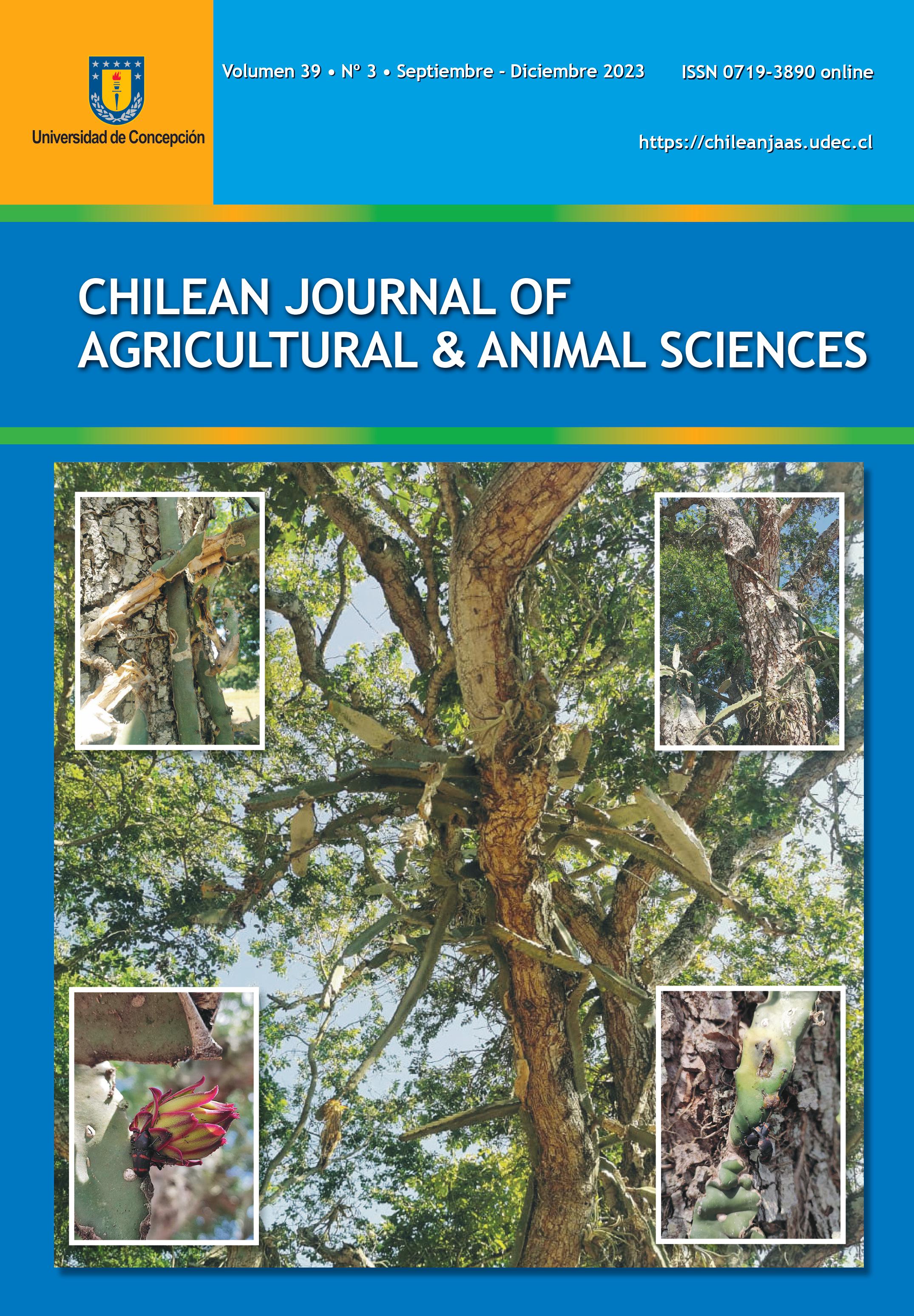Amaranthus hybridus L. RESISTANT TO GLYPHOSATE AND CHLORIMURON IN PARAGUAY
DOI:
https://doi.org/10.29393/CHJAA39-25AHEL60025Palabras clave:
smooth pigweed, herbicides, acetolactate synthase (ALS) inhibitors, 5-enol-pyruvyl-shikimate-3-phosphate (EPSPS) inhibitors, weedResumen
Amaranthus species are extremely problematic weeds due to their aggressiveness and resistance, being Amaranthus palmeri S. Watson, Amaranthus retroflexus L., Amaranthus tuberculatus (Moq.) J. D. Sauer, and Amaranthus hybridus L. prominent worldwide. The present research aimed to study A. hybridus populations in Paraguay where the use of glyphosate and chlorimuron herbicides presented management challenges. This research was conducted in the municipalities of Corpus Christi and Hernandarias, Paraguay, in 2016, 2017, 2018, 2019, and 2020. Weed seeds with resistance indicators were collected, cultivated, and following a screening process, cultivated for seed production (heritability up to F2), and the seeds were collected to obtain the herbicide dose-response curve. The herbicides glyphosate and chlorimuron were tested in portions of 1/8, 1/4, 1/2, 1, 2, 4, and 8 times the recommended dose on the package inserts (720 g acid equivalent [ae] ha?1 and 20 g active ingredient [ai] ha?1, respectively). Among the A. hybridus populations evaluated in Paraguay, biotype from Hernandarias with multiple resistance to ALS-inhibiting (HRAC 2) and EPSPs-inhibiting (HRAC 9) herbicides, and biotype from Corpus Christi with resistance to ALS-inhibiting herbicides (HRAC 2) were found. Therefore, rotation and combination of herbicides, as well as integration with non-chemical measures, are essential to control and prevent selection of resistant biotypes. Studies aimed to develop integrated weed management plans are essential for effective control. In countries like Paraguay, this becomes imperative because of the lack of research on this topic.
Descargas
Publicado
Cómo citar
Número
Sección
Derechos de autor 2023 Eduardo Seity Furlan Kashivaqui, Fabrício Krzyzaniak, Afonso Pires, André Felipe Moreira Silva, Alfredo Junior Paiola Albrecht, Leandro Paiola Albrecht

Esta obra está bajo una licencia internacional Creative Commons Atribución 4.0.







